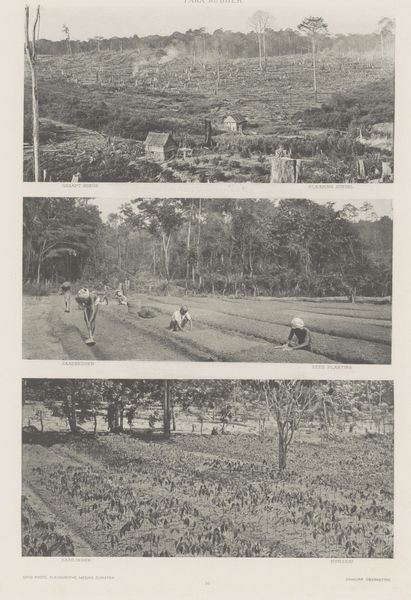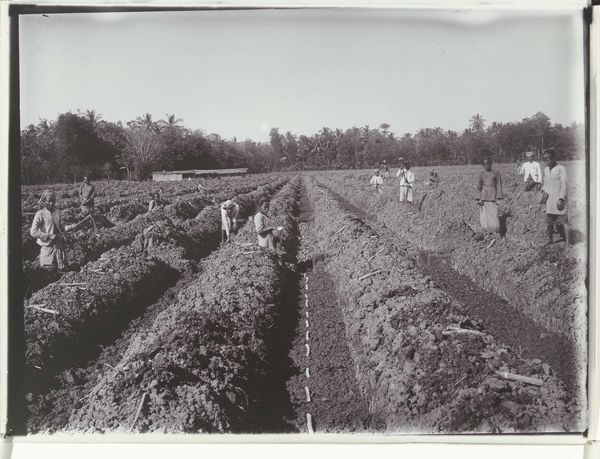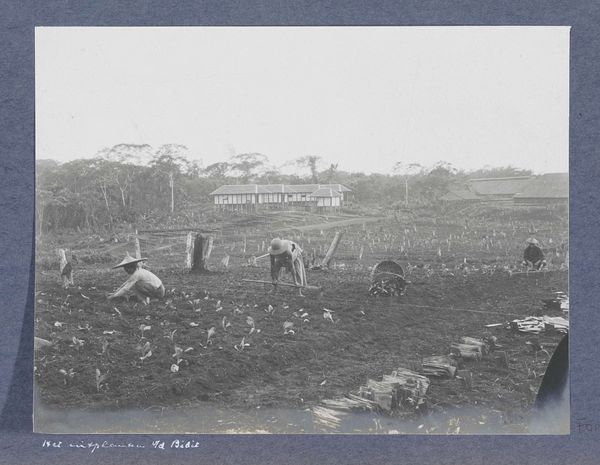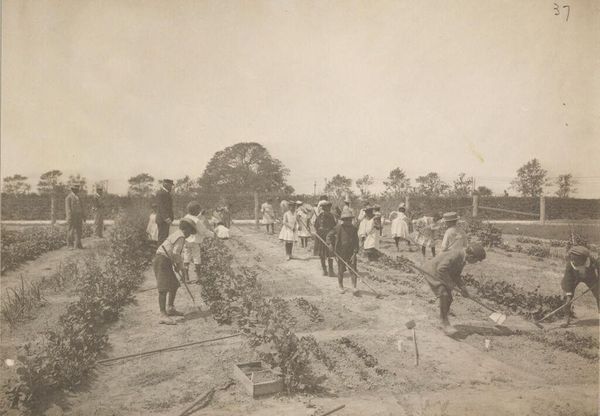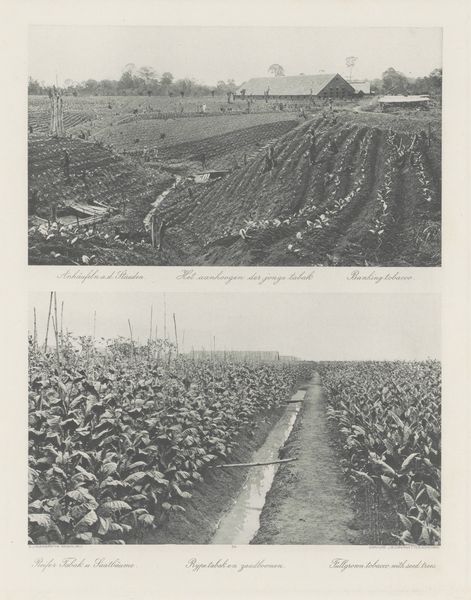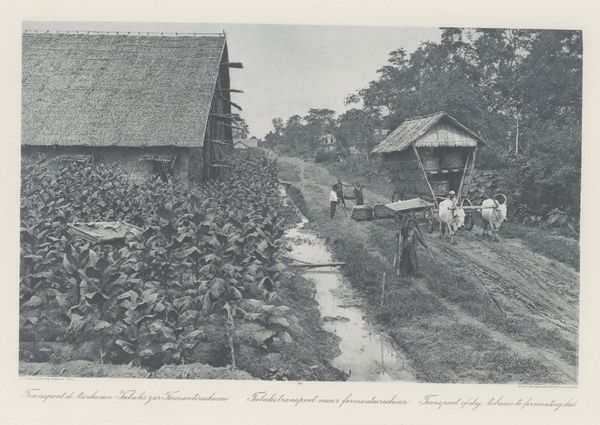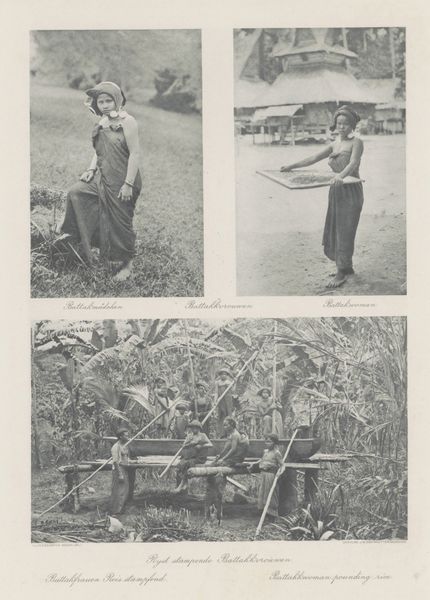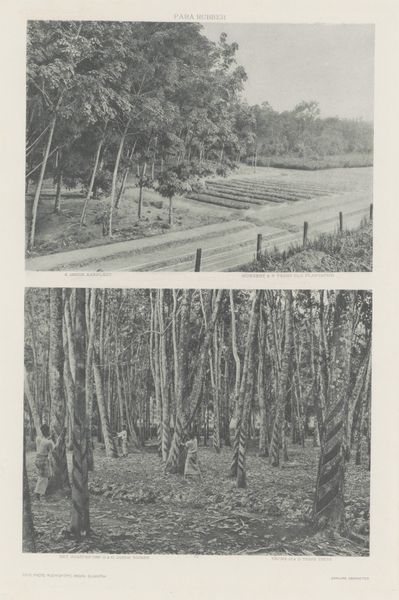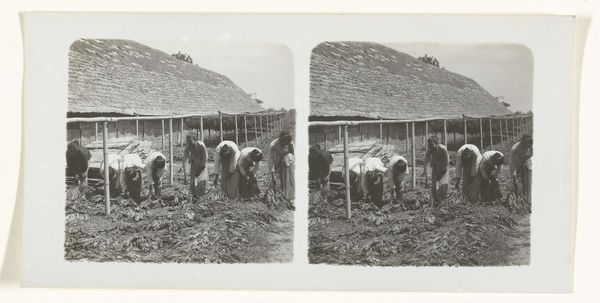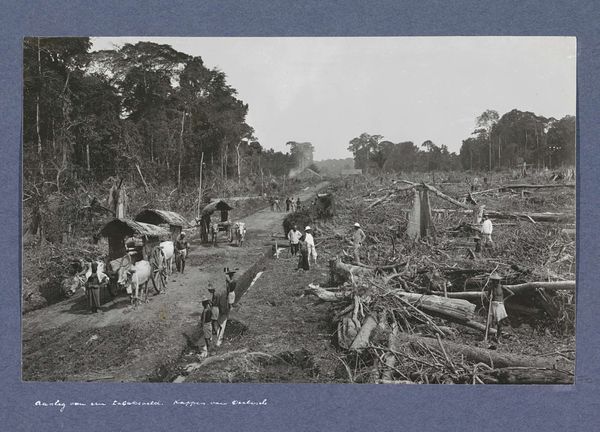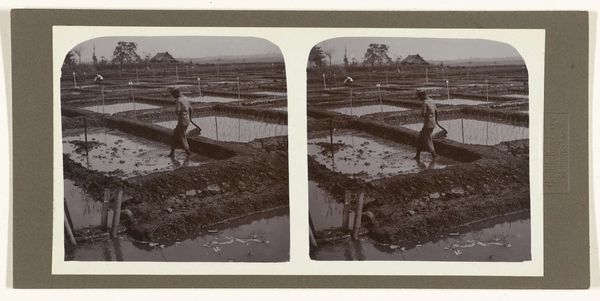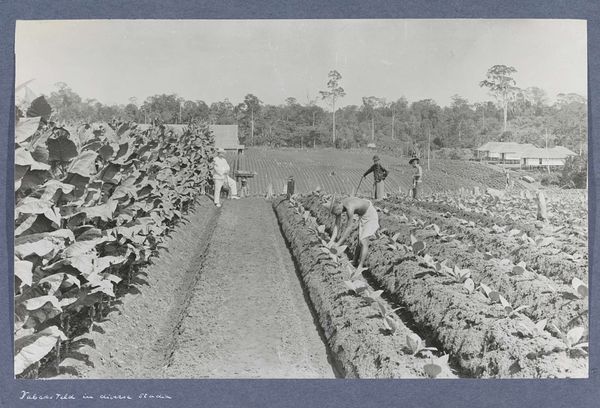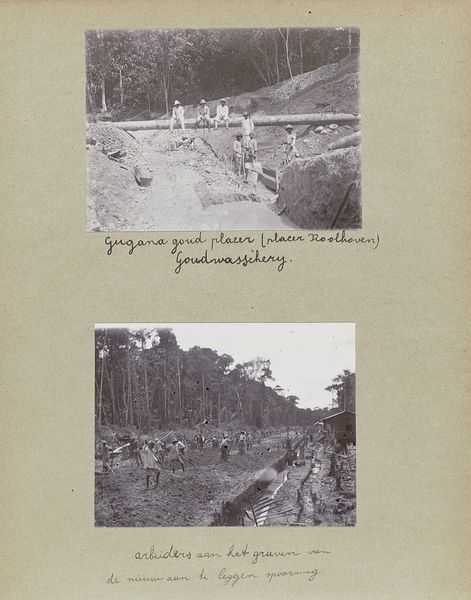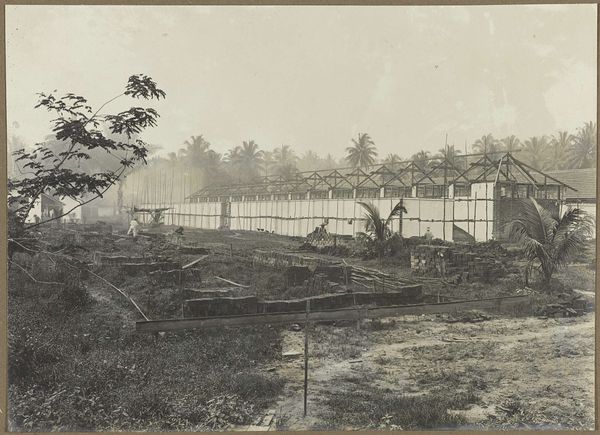
Uitplanten van zaailingen (boven) en tabakzaadbedden (onder) op Sumatra before 1898
0:00
0:00
print, photography
#
african-art
# print
#
landscape
#
photography
#
desaturated colour
#
orientalism
#
realism
Dimensions: height 125 mm, width 218 mm, height 133 mm, width 218 mm
Copyright: Rijks Museum: Open Domain
Curator: This print, titled "Uitplanten van zaailingen (boven) en tabakzaadbedden (onder) op Sumatra", captured sometime before 1898 by Carl J. Kleingrothe, shows two scenes of agricultural activity. It's currently held at the Rijksmuseum. Editor: My first thought? Serenity and labor. There's a calmness in the way the landscape unfolds, but also a real sense of the work involved. Almost makes you smell the earth. It has some qualities of an old photo album doesn’t it? A tangible, sepia-toned moment captured for all time. Curator: That tangibility is enhanced by the printmaking process itself. Think about how photography at this time played a pivotal role in documenting colonial landscapes and labor practices. Prints like this weren't just pretty pictures. They circulated within a specific colonial context, often reinforcing certain ideas about labor, landscape, and power. Editor: Absolutely. I think about that relationship a lot with images like this. You see the idyllic… and then you remember whose hands are really in the soil. How the global dynamics were completely out of balance with some benefiting and others providing labor under less-than-ideal situations. I imagine the actual work was far from serene. But visually, it's compelling; the repeating shapes of the seedlings, the workers’ hats— almost like brushstrokes. Curator: I agree. There’s also this interesting push and pull. On the one hand, the landscape itself—lush, exotic—functions almost like a stage, an enticement for further exploitation. On the other, those "brushstrokes" you mention, they offer a testament to human activity and perseverance. Editor: Yes, the way the fields are divided in sections by small roads makes it seem as though nature has been completely tamed and organized by people. Thinking about that contrast of industry versus individual, even that term “realism” feels almost contradictory, but appropriate. In the end, what we feel is filtered through this historical lens, and the beauty feels… complex. Curator: Complex is the right word. Perhaps it invites us to consider how we are implicated in such stories. Editor: Definitely leaves a contemplative and sobering impact beyond just admiring the visuals. Thanks for bringing that background to light!
Comments
No comments
Be the first to comment and join the conversation on the ultimate creative platform.
